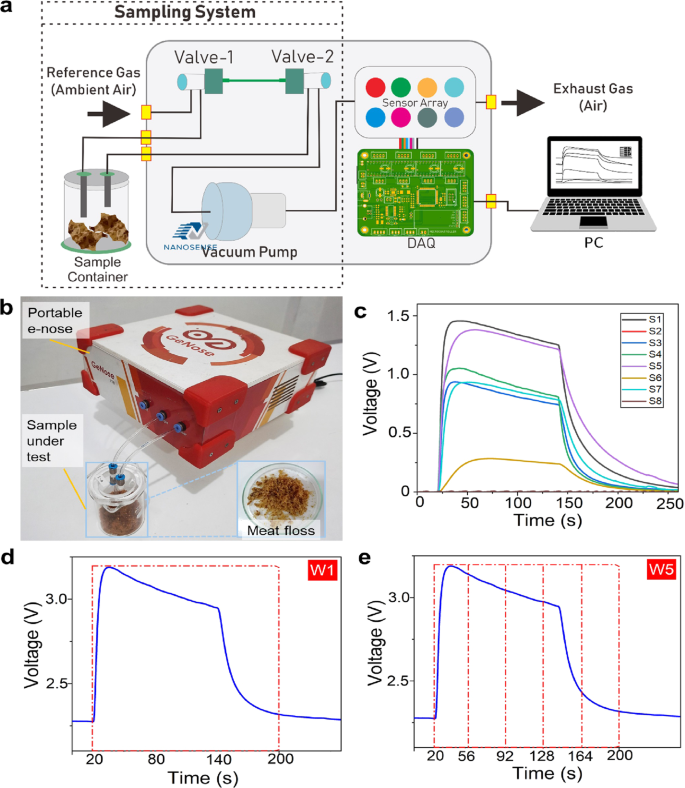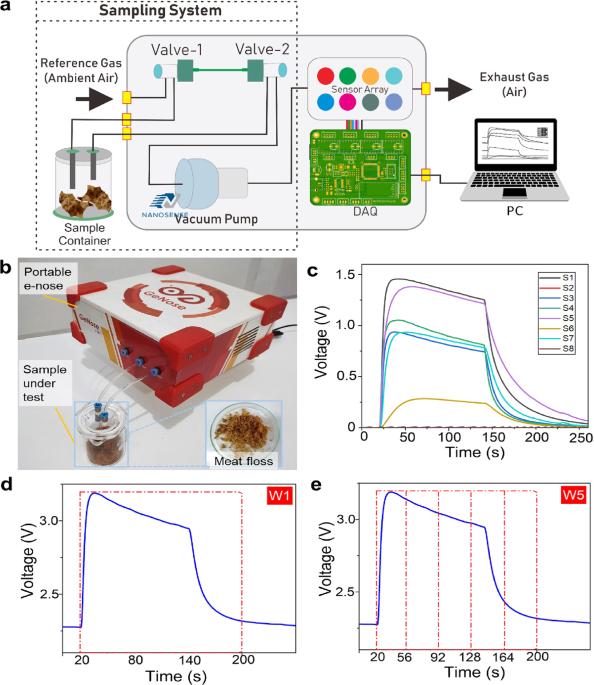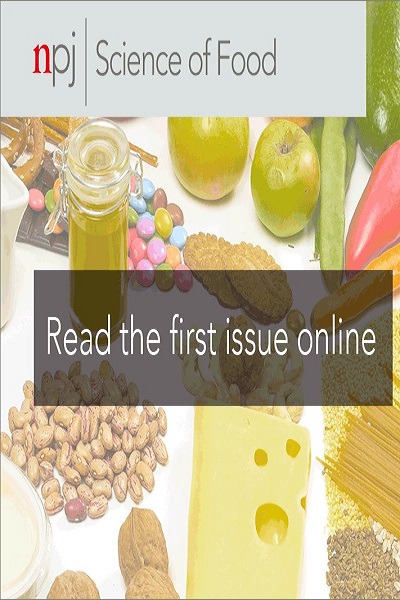利用基于监督机器学习的电子鼻快速分析肉松来源,实现食品认证
IF 7.8
1区 农林科学
Q1 FOOD SCIENCE & TECHNOLOGY
引用次数: 2
摘要
由于含有猪肉的食品存在潜在的过敏性疾病风险或宗教信仰问题,因此肉松产地的鉴定对消费者来说至关重要。在此,我们开发并评估了一种小型便携式电子鼻(e-nose),该电子鼻由气体传感器阵列和监督机器学习组成,采用窗口时间切片法嗅闻不同的肉松产品并对其进行分类。我们评估了四种不同的数据分类监督学习方法(即线性判别分析 (LDA)、二次判别分析 (QDA)、k-近邻 (k-NN) 和随机森林 (RF))。其中,在验证和测试数据中,采用五窗口提取特征的线性判别分析模型对牛肉、鸡肉和猪肉绒的判别准确率最高,达到 99%。获得的电子鼻结果与傅立叶变换红外光谱(FTIR)和气相色谱-质谱(GC-MS)测量的光谱数据进行了关联和确认。我们发现,牛肉和鸡肉的化合物群(即碳氢化合物和酒精)相似。同时,我们发现醛类化合物(如十二醛和 9-十八醛)在猪肉产品中占主导地位。根据其性能评估,所开发的电子鼻系统在食品真伪检测方面显示出良好的效果,为全面检测欺骗和食品欺诈企图铺平了道路。本文章由计算机程序翻译,如有差异,请以英文原文为准。


Rapid analysis of meat floss origin using a supervised machine learning-based electronic nose towards food authentication
Authentication of meat floss origin has been highly critical for its consumers due to existing potential risks of having allergic diseases or religion perspective related to pork-containing foods. Herein, we developed and assessed a compact portable electronic nose (e-nose) comprising gas sensor array and supervised machine learning with a window time slicing method to sniff and to classify different meat floss products. We evaluated four different supervised learning methods for data classification (i.e., linear discriminant analysis (LDA), quadratic discriminant analysis (QDA), k-nearest neighbors (k-NN), and random forest (RF)). Among them, an LDA model equipped with five-window-extracted feature yielded the highest accuracy values of >99% for both validation and testing data in discriminating beef, chicken, and pork flosses. The obtained e-nose results were correlated and confirmed with the spectral data from Fourier-transform infrared (FTIR) spectroscopy and gas chromatography–mass spectrometry (GC-MS) measurements. We found that beef and chicken had similar compound groups (i.e., hydrocarbons and alcohol). Meanwhile, aldehyde compounds (e.g., dodecanal and 9-octadecanal) were found to be dominant in pork products. Based on its performance evaluation, the developed e-nose system shows promising results in food authenticity testing, which paves the way for ubiquitously detecting deception and food fraud attempts.
求助全文
通过发布文献求助,成功后即可免费获取论文全文。
去求助
来源期刊

NPJ Science of Food
FOOD SCIENCE & TECHNOLOGY-
CiteScore
7.50
自引率
1.60%
发文量
53
期刊介绍:
npj Science of Food is an online-only and open access journal publishes high-quality, high-impact papers related to food safety, security, integrated production, processing and packaging, the changes and interactions of food components, and the influence on health and wellness properties of food. The journal will support fundamental studies that advance the science of food beyond the classic focus on processing, thereby addressing basic inquiries around food from the public and industry. It will also support research that might result in innovation of technologies and products that are public-friendly while promoting the United Nations sustainable development goals.
 求助内容:
求助内容: 应助结果提醒方式:
应助结果提醒方式:


